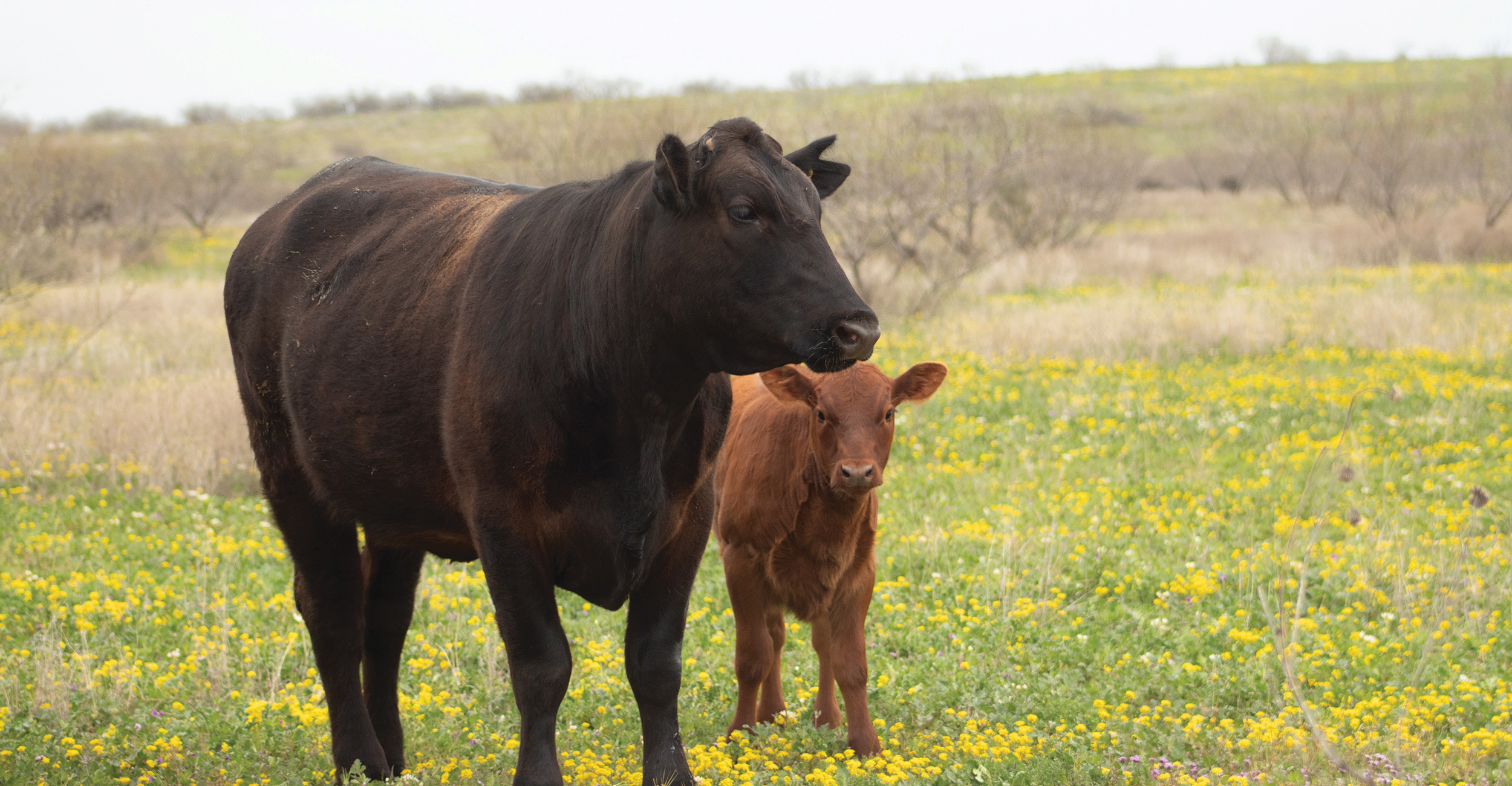
Bringing Back the Beef: OSU Extension resources help rebuild the Oklahoma cow herd
Tuesday, May 28, 2024
Media Contact: Sophia Fahleson | Digital Communications Specialist | 405-744-7063 | sophia.fahleson@okstate.edu
The blaring sound of the alarm goes off before sunrise. Sounds stir as the world wakes up and coffee brews. Just as the sun rises, the words “calf prices are high” fill the air from the “Oklahoma Farm Report” radio host. Time to take some calves to the sale barn.
“Beef is a premium product and premium protein for Oklahoma and the nation,” said Michael Kelsey, Oklahoma Cattlemen’s Association executive vice president.
Within OSU Agriculture, numerous OSU Extension specialists work with beef producers to evaluate the market outlook and production possibilities to take advantage of the cattle market opportunities and potential for herd rebuilding, said Derrell Peel, Oklahoma State University agricultural economics professor.
The beef cow herd is a primary agricultural production source in Oklahoma, but the drought from the last three years has forced cattle producers to reduce the state’s cow herd, Kelsey said.
A shortage of heifers and cows used in beef production exists because cows and heifers were sent to slaughter during the drought when no grazing land was available for them, he added.
“We’ve been eating cattle instead of breeding cattle,” Peel said. “You can only use them one way.”
As of January 2024, the U.S. cow herd is the smallest it has been since 1961, Peel said.
From an economic and market standpoint, the U.S. cow herd is too small to meet the country’s production needs, Peel added.
“Droughts are often regional, requiring destocking in that region to avoid overgrazing,” said David Lalman, OSU beef cattle extension specialist. “When moisture conditions improve, cows or replacement heifers can often be purchased and moved in from other regions where forage is abundant.
“In this case, destocking has occurred through most of the country and replacements are therefore either very expensive or difficult to find,” Lalman added.
The cattle market’s response to the decreased herd size is to increase prices to increase production, Peel said.
In spring 2024, cattle prices reached record high numbers, Kelsey said, and prices are expected to continue to increase through the year.
The cattle market’s goal is to try to convince producers to keep heifers to breed and rebuild the cow herd, which is known as heifer retention. Retention is the only way producers can increase the cow herd, Kelsey said.
“Producers’ cows have to come from somewhere,” Lalman said. “Retaining heifers is the way to do that.”
When producers look for replacement heifers, they should remember the selected heifers will be the start of future herds, Lalman said. Producers should retain high-quality heifers to benefit the herd and create a better profit, he added.
However, the rebuilding process could create negative effects for cattle producers and consumers, Peel said.
Rebuilding the herd through heifer retention decreases the supply of beef because fewer feeder calves are on the market, Peel said. Because a large demand already exists, he added, the shortage in supply will increase the market price for calves.
As a result, the increased market prices will put pressure on producers to sell their heifer calves instead of retaining them, Peel said.
“Nothing cures high prices like high prices,” Lalman said. “Eventually, prices will come down again. So, commercial producers must plan carefully for that occurrence and avoid paying too much for replacement heifers.
“Payments will be difficult to make when calves are selling for a fraction of what they are bringing today,” Lalman added. “The cost of producing calves will not come down nearly as much as the price of cattle.”
In 2022-23, beef production was high, Peel said, and more than 51% of slaughtered beef animals were female.
The lack of females retained will cause the process of rebuilding the herd to take longer, Kelsey said.
“When you reduce the number of cows kept, it’s going to cause the calf crop to decrease for the next year,” Kelsey said. “Because of this, I believe it is going to take anywhere from two to four years to rebuild the cow herd.
Another issue with herd rebuilding is the lack of cattle producers and land, Lalman said. With a rancher’s average age around 60 years old and high start-up costs, getting the next generation involved is difficult, he added.
“A huge challenge for the younger generation of farmers and ranchers is purchasing land,” Lalman said. “Buying land to make a profit in the agricultural industry can be hard, especially if they are not going back to a family operation where land is already available,” he added.
OSU Extension offers a specific program to help beef producers select and develop replacement heifers, Lalman said. Additional OSU Extension programs help keep beef producers informed and provide education about the beef industry.
The Oklahoma Beef Cattle manual developed by OSU Extension can be a valuable resource every beef producer should have, Lalman added.
“There are many challenges and opportunities to think about in this rebuilding cycle,” Kelsey said.
Story by: Kylie Walters | Cowboy Journal
